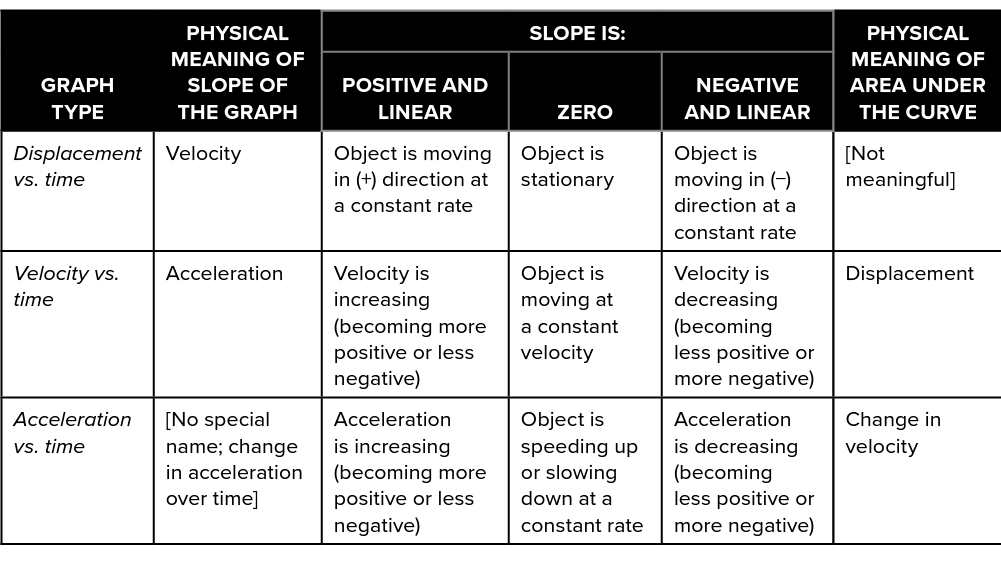Vectors and Kinematics Equations
Vectors and Scalars
Scalar: a value that ONLY contains a magnitude (a ‘size’)
examples of scalar quantities include distance, speed, and work.
They only deal with magnitude and not in what direction the quantity is going
Vector: a value that has magnitude AND direction
examples include displacement, velocity, acceleration, and forces
vector quantities sometimes contain an arrow above their values, hinting that direction is also important with the quantity (but the arrow doesn’t actually show the direction)
Multiplying 2 scalar quantities will create a new scalar quantity
Multiplying a scalar and a vector quantity together will result in a vector quantity
Multiplying 2 vector quantities will create a new vector quantity
Visualizing vectors in 2 dimensions
Vector addition
Magnitude is specified by the length of the arrow
Direction is specified by the direction of the arrow
Vector A + Vector B = Vector C
The net shift amount is the sum of Vector A and B
NOTE: the sum of two vectors must be greater or equal to the difference of their magnitudes, but smaller or equal to the sum of their magnitudes
E.g Vector A= 10 m/s, B=7 m/s, then C must be greater than or equal to 3 OR less than or equal to 17
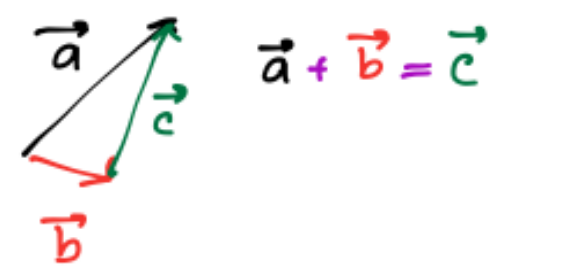
Vectors don’t necessarily state a starting point, so even if Vector A and Vector B have different starting points, you can put them ‘head to tails’

In order to do this vector addition, you need to break down the vector into its components
Breaking down any vector into its components
Vector X is the sum of horizonal component and vertical component
break down Vector X into its horizontal and vertical components
This turns a 2D problem into two separate 1D problems

Subtracting Vectors
If asked to subtract a vector, simply switch the arrow direction of the vector and then follow the rules as if its a normal addition problem
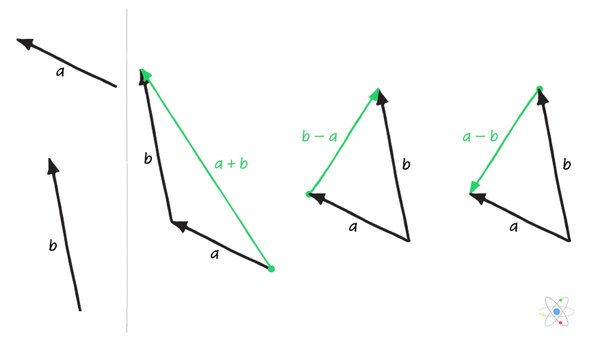
Kinematics
Displacement
Displacement is an objects net change in position while the distance refers to the magnitude of the displacement
Distance = position final- position initial
When referring to the displacement of an object, we must also take direction into account (while distance is scalar and doesn’t require a direction).
Since displacement is the net distance traveled by an object, the displacement value can be less than the total distance taken.
ex: running on a circular track with starting and stopping at the same location.
the distance you ran can be 1 mile but if you stopped in the same place you started, then your displacement is 0 (since there was no net movement in position)
Displacement= positional final - position initial =net distance plus direction
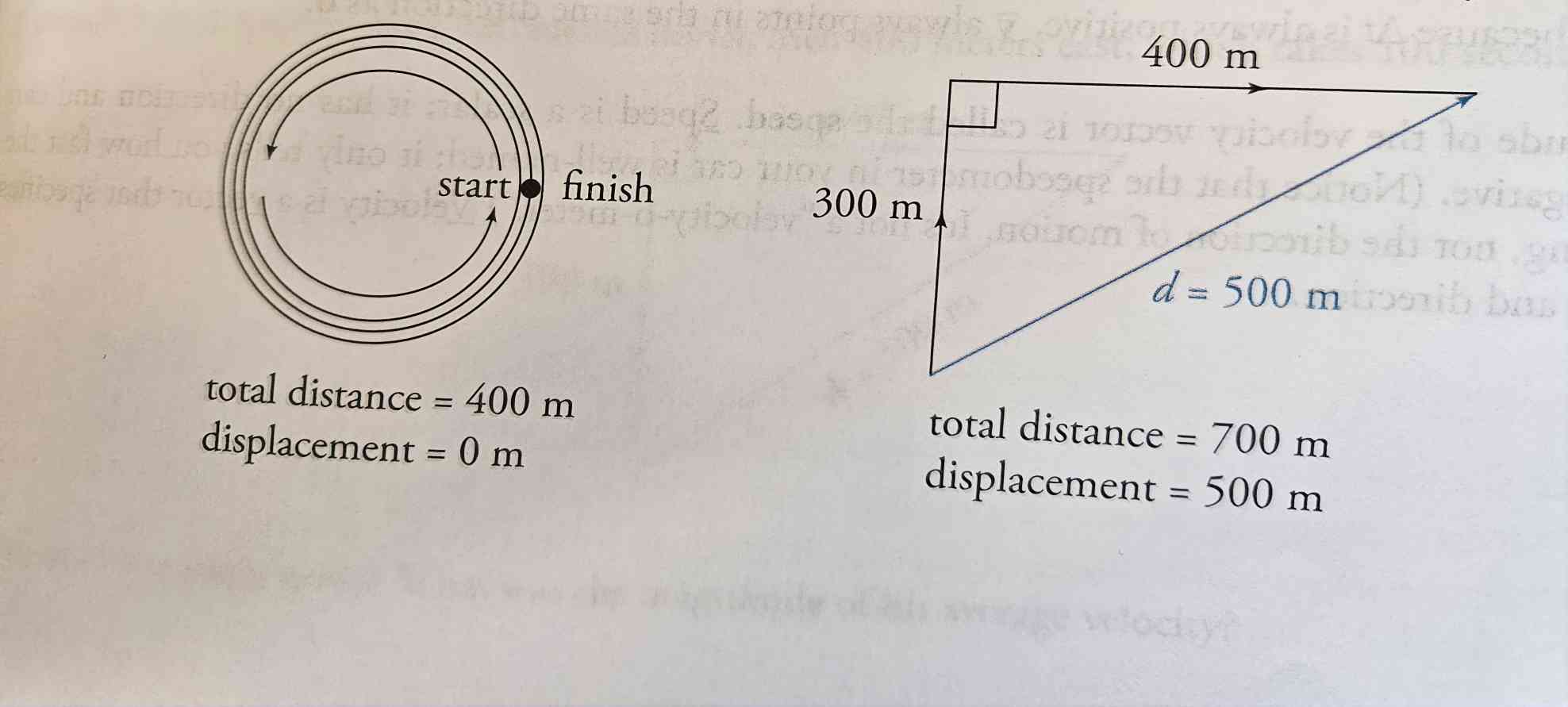
Velocity
Velocity tells us how fast an object’s position changes.
average velocity= displacement/time OR change in displacement/change in time
The magnitude of the velocity vector is called the speed
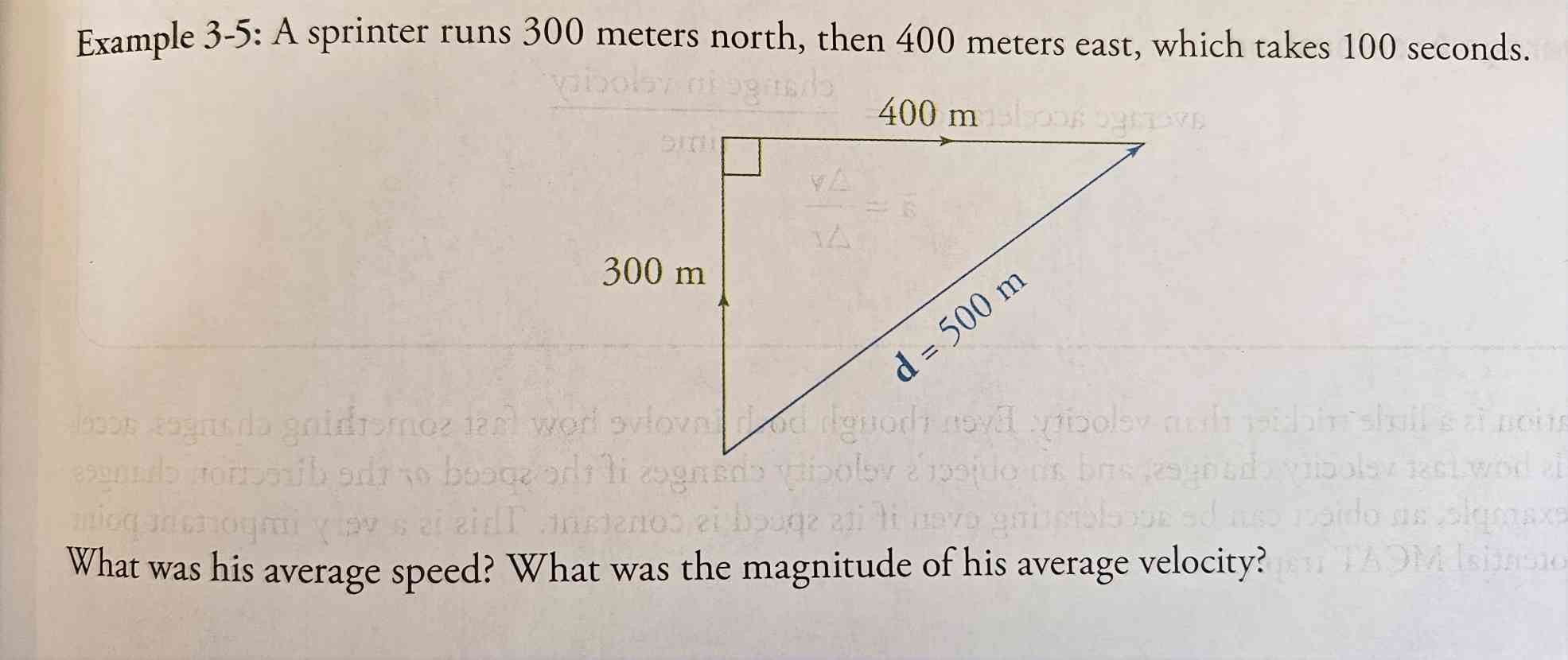
The sprinter’s average speed= total distance/time= 700/100= 7m/s
The sprinter’s average velocity= displacement/time= 500/100= 5m/s
Acceleration
Acceleration tells us how fast an object’s velocity changes
average acceleration= change in velocity/time
NOTE: acceleration tells us how fast velocity changes
an object’s velocity changes if the speed OR direction changes
so an object can be accelerating even if the speed is constant
If velocity remains constant, then acceleration is 0 (and can be constantly at 0 until velocity changes)
Deacceleration also constitutes as acceleration (because velocity is changing)

If acceleration points in the same direction as the initial velocity, then the object’s speed is increasing
If acceleration points in the direction opposite to the initial velocity, then the object’s speed is decreasing
vi= 7m/s, vf= 1m/s, t=3seconds
acceleration= (1-7)/3= -2m/s²
decreasing acceleration
vi= -2m/s, vf= -5m/s, t=2seconds
acceleration= (-5- -2)/2= -1.5m/s²
increasing acceleration
Uniformly Accelerated Motion and Free Fall
Motion in which the object’s acceleration is constant
Uses the' ‘big 5’ equations, but such equations can be used through other means and all 5 account for missing variables.

Most common equations asked for on the MCAT are equations 1, 2, and 3
In terms of free fall (objects falling directly down or being thrown directly up), the big 5 equations can be used, but use the gravitational acceleration constant 9.8m/s² for acceleration (round constant to 10m/s²)
Examples:
A particle has an initial velocity of 10m/s and a constant acceleration of 3m/s² in the same direction. How far will the particle travel in 4 seconds?
missing final velocity so use equation 2
d=vi(t)+1/2at²
d=10(4)+1/2(3)(4²)= 64m
An object starts from rest and travels in a straight line with a constant acceleration of 4m/s² in the same direction until its final velocity of 20m/s. How far does it travel during this time?
missing time but are given vi,a,vf and being asked for d- use equation 3 and rearrange to solve for d
vf²= vi² +2ad → d= (vf²-vi²)/2a
d= (20²)/(2×4)=50m
An object is dropped from a height of 80m. How long will it take to strike the ground?
missing final velocity, but given a, d, vi and being asked for t, use equation 2
vi=0 m/s because its first at rest before being dropped
d=vi(t)+1/2at² → d=1/2at²
t= sqrt((2×80/10) = 4s
NOTE: a is positive in free fall because we are moving in the same direction as gravity
Projectile Motion
Projectile motion would occur when something is experiencing both horizontal and vertical motion
can be seen when trajectory of an object follows a curve (due to gravity and being thrown at an angle that’s not directly up or down)
To solve projectile motion problems, we must analyze variables in the x and y directions.
the key is to analyze each direction separately
example: split initial velocity into initial velocity in the x and y directions
vx is constant; vy changes due to gravitational acceleration
vy=0 at the top of a projectile’s trajectory
You might need to use trigonometry to solve for variables in the x or y direction and then plug such variables into one of the big 5 equations
 Example:
Example:
A rock is thrown horizontally, with an initial speed of 10m/s, from the edge of a vertical cliff. It strikes the ground 5s later.
How high was the cliff?
looking for vertical distance
because the rock was thrown horizontally, there is no initial vertical velocity
the equation will then look like: vy= 1/2-gt²
y=1/2(-10m/s²)(5s)² =-125m
height of the cliff is 125m because the equation said it fell from a height of 125m
How far from the foot of the cliff does the rock land?
looking for horizontal distance
use the equation x=vix*t
x=(10m/s)(5)= 50m
Motion on an inclined plane
Similar thinking/ processes like projectile motion but instead we break up acceleration into x and y components (or parallel or perpendicular to the inclined plane)
drawing a free body diagram assists in breaking down acceleration components
again- this will involve some trig.
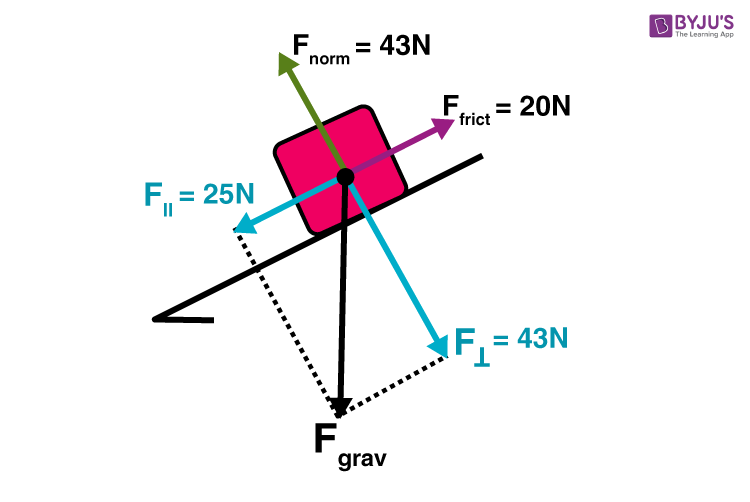
Graphical Interpretations relating to time, acceleration, displacement, and velocity
